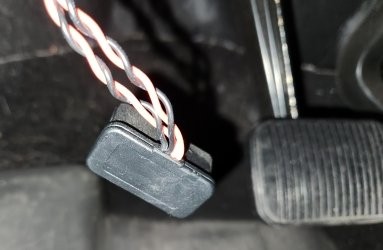The OBD2 port in your 2017 Ford F-150 is a critical access point for vehicle diagnostics and various aftermarket devices. Understanding its fuse and potential issues is essential for every F-150 owner. Let’s delve into the details of the OBD2 port fuse in your 2017 Ford F-150.
The On-Board Diagnostics II (OBD2) port is not just for professional mechanics; it’s also utilized for emissions testing, insurance monitoring, and even installing aftermarket accessories like security systems or performance tuners. This port relies on a fuse to protect it from electrical overloads, ensuring the sensitive diagnostic equipment and your truck’s computer system are safe. If you’re experiencing issues with scanning your vehicle, or if an OBD2 device suddenly stops working, the first thing to check is the OBD2 port fuse.
Locating this fuse is generally straightforward. In the 2017 Ford F-150, the fuse box is typically located inside the cabin, often under the dashboard on the driver’s side or sometimes in the passenger footwell. Consult your owner’s manual for the precise location of the fuse box diagram, as fuse box locations can slightly vary depending on the specific trim and options of your F-150. Once you’ve located the fuse box, the diagram will indicate the fuse responsible for the OBD2 port. It’s usually a low amperage fuse, often around 5 to 10 amps.
 Alarm 1.jpg
Alarm 1.jpg
Image showing the OBD2 port area in a Ford F-150, highlighting the potential location for aftermarket device connections and the importance of the fuse.
A blown OBD2 port fuse can manifest in several ways. You might find that your scan tool fails to connect, preventing you from reading trouble codes or monitoring live data. Similarly, any aftermarket devices plugged into the OBD2 port, such as GPS trackers or alarms, may cease to function. In some cases, a faulty aftermarket device can even cause the fuse to blow repeatedly, indicating a more serious issue with the device or the wiring.
If you suspect a blown fuse, visually inspect it. A blown fuse will typically have a broken filament inside the clear plastic housing. It’s always wise to keep spare fuses of the correct amperage in your truck. Replacing a blown OBD2 port fuse is a simple DIY task, but if the fuse blows again immediately or repeatedly, it’s crucial to diagnose the underlying problem. This could range from a wiring short to a malfunctioning OBD2 device.
 Alarm 2.jpg
Alarm 2.jpg
Image showing a close-up of an aftermarket alarm system potentially connected to a Ford F-150’s OBD2 port, illustrating the context of fuse relevance for such devices.
In conclusion, understanding the OBD2 port fuse in your 2017 Ford F-150 is a small but significant part of vehicle maintenance. Knowing its location, function, and how to check and replace it can save you time and potential headaches when dealing with diagnostic issues or aftermarket device installations. Always refer to your Ford F-150 owner’s manual for the most accurate fuse box diagrams and fuse specifications for your specific vehicle.
